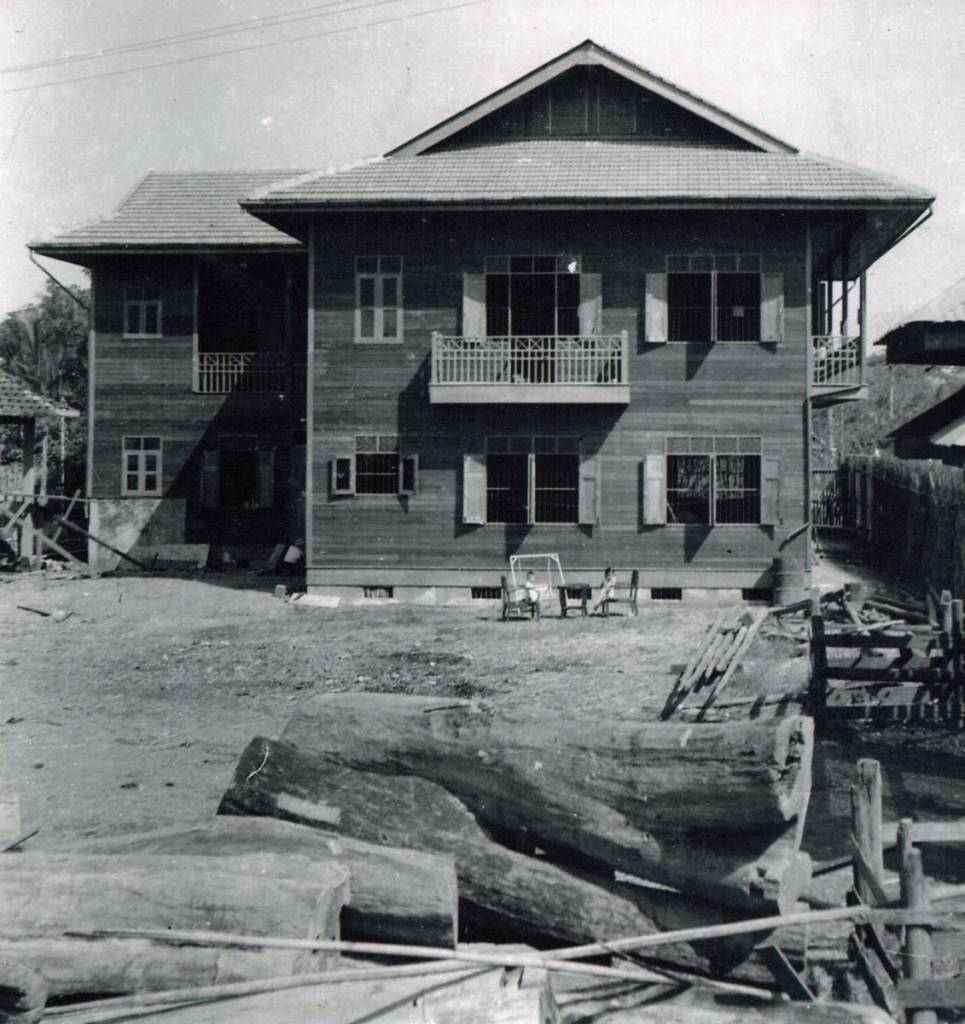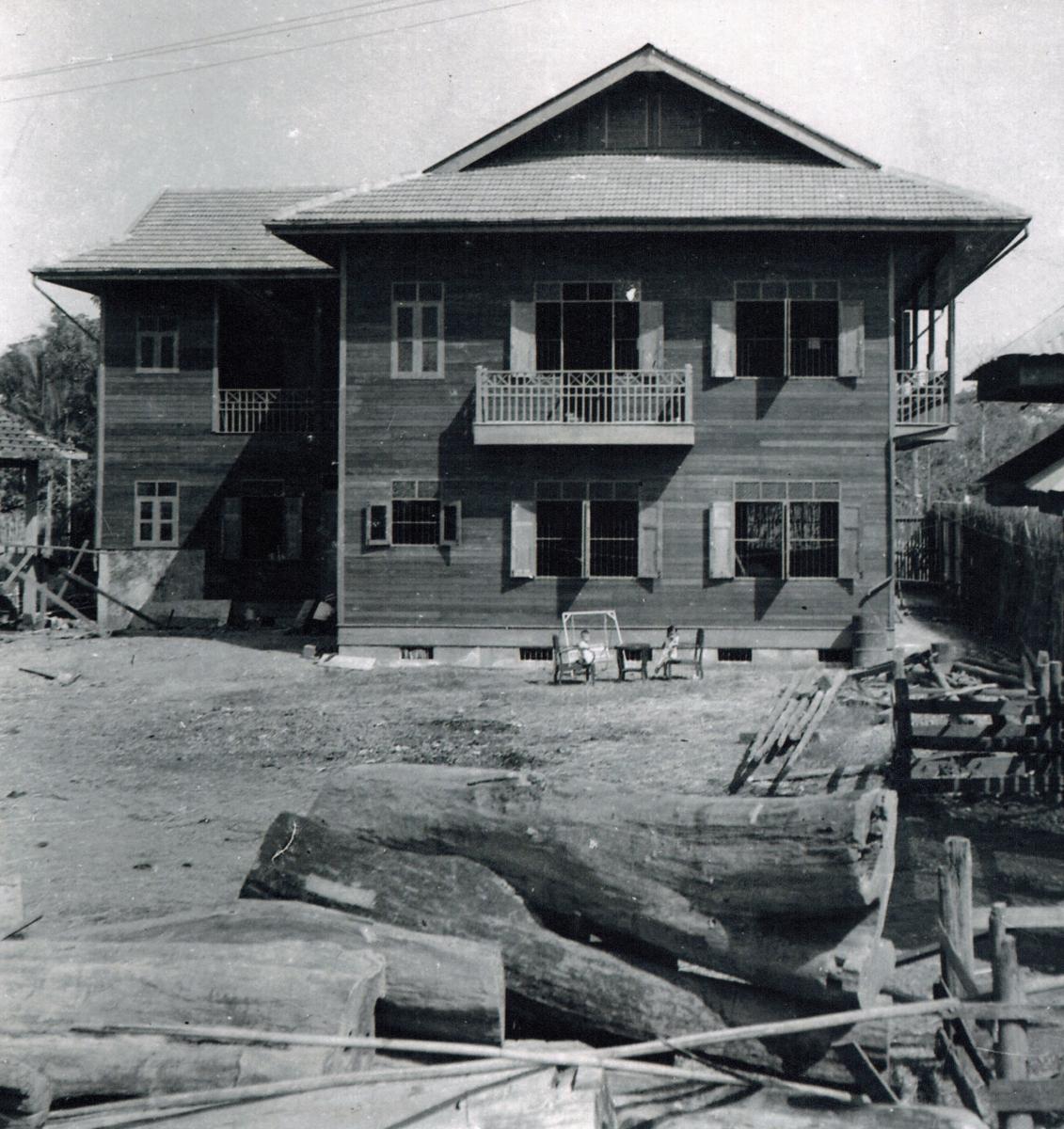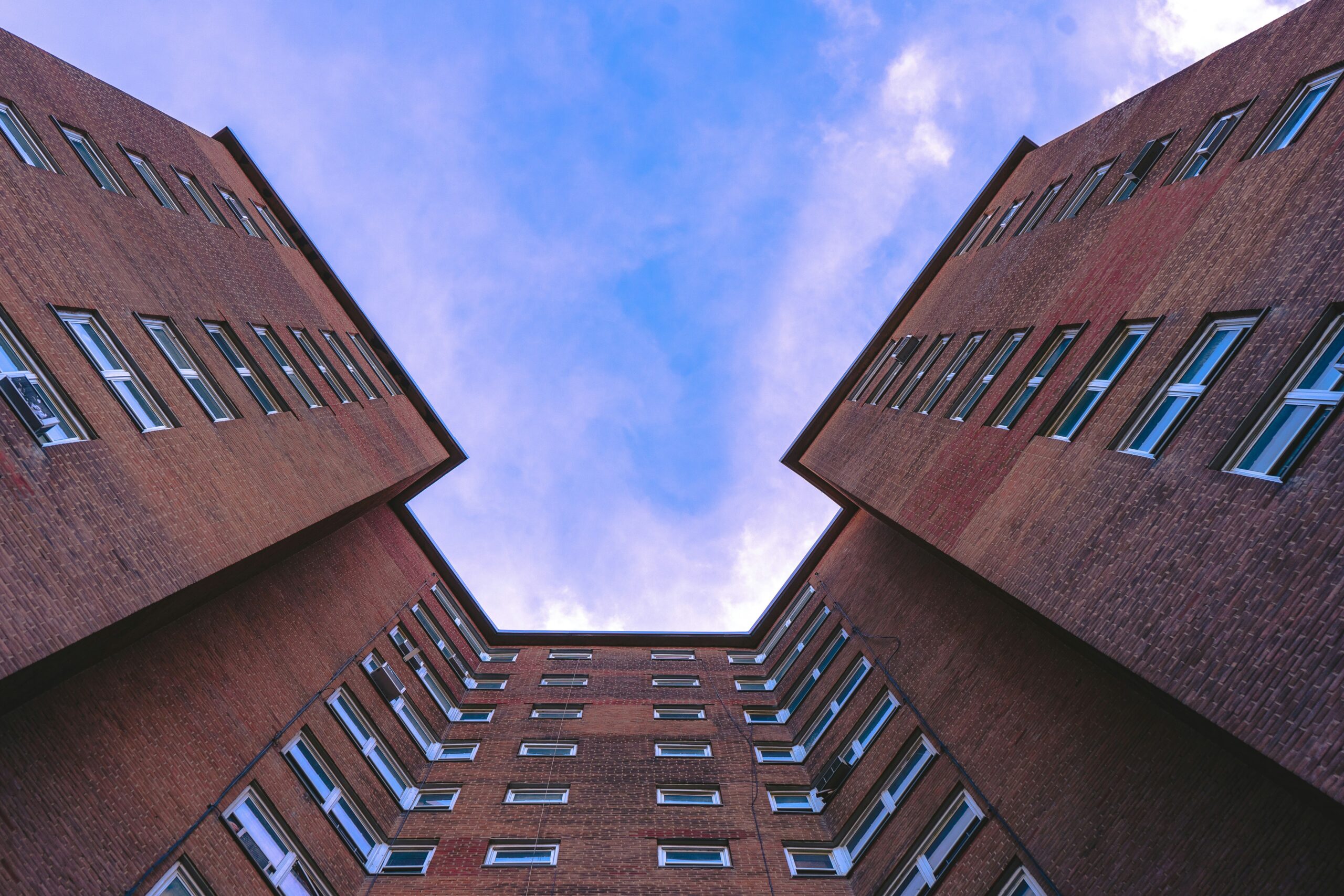
I like pressing my cheek up against the cool embrace of the teak floor, letting the chill lap against my face, chest, arms, and legs. I especially like the feeling of a freshly mopped teak floor. The wood becomes softer, more soothing like a cool straw mattress in the hot summer. When I walk barefoot, the gentle tickle below my feet beckons me to lie down. I like the rush of wooden veins flowing underneath my thighs and arms, brushing them into slumber.I’ve tried resisting the temptation on many occasions, but I always succumb to the elbow-rubbing intimacy that ensues. Remain too far away and there is nothing to smell. Rub too close and all the pleasure is gone. But get close enough to brush your tingling nose against the grainy grooves on the surface and you become lost in the aroma. I steal another whiff; the smell is subtler than rosewood, more subdued than pine, but sweeter than cedar.
I recently began to wonder how my grandparents built their house of teak in the north of Thailand. A house of solid teak – floors, walls, ceilings, staircase, corridors, windowpanes, doors and all – would cost you a fortune today. It would also land you in jail, given the strata of domestic and international laws on environmental and ecological protection. When I was a child, my mother and I would take the overnight train from Bangkok to the north every four or five months. I loved the overnight train. As a child, I liked climbing to the second bunk bed and peaking down at my mother who was often snoring after a tiring day carrying me around. I liked the gentle tug of the train on rails rocking me to sleep. In the morning, I would wake up to a green blur of northern rice fields and mountainous forests racing past the window.
My grandparents raised my mother in a northern town called Phayao – about an hour and a half by bus northeast of Chiang Mai. Phayao used to be a prosperous ancient kingdom between the 11th and 13th century, but has gradually become a slow and sleepy provincial town. In 1941, the town constructed a dam to improve irrigation around it. The resulting lake submerged several large swamps in the area, as well as 20 villages and a dozen Buddhist temples. My mother showed me a black and white photo of the two stories of teak my grandparents built facing the lakeshore. She must have been about three years old when the house was nearly finished. Together with her sister, they look like play dolls having tea on a table in front of a grand playhouse. Every morning, the window and door panes were swung wide open to let in the lakeside air through thirsty mouths of teak. The house was enjoying its morning coffee.
The last time I was home, I helped my mother document the number of doors and windowpanes in the teak house. There were a total of 68 teak door panes and 122 windowpanes, an amount on par with a medium-sized hotel. It was an understatement to call them panes, though. Each wooden panel flaunted individual brass handles and locks. They featured hand-carved indents bordering the panel and smaller inlaid ridges that over the years had decayed slightly, giving the windowpanes a kind of vintage character. These details were to be another thread woven into my mother’s book about her parents, a project she began three years ago when I left for college in the United States. She flipped a lock and detached the center slab to make a small opening in the windowpane. “To ventilate the house, rain or shine” my mother smiled.
From the outside, the teak house had virtually no visible nails. My grandfather, orGohng as I called him from Chinese tradition, insisted the carpenter use tongue and groove joints to lock the teak walls, floors, and ceilings together. Carving these interlocking rabbets by hand was a costly and laborious process reserved only for high-ranking officials or nobility. But my grandfather was just a paddy rice miller and grain merchant. In 1947 he married my grandmother, a beautiful northerner who, unlike most rural girls, was well educated and bilingual in both Thai and Chinese like himself. Together, they bought paddy – crops such as corn or peanuts and forest materials like lac – from local farmers arriving by the oxcart. They then dried these goods in sunlight, storing them under controlled temperature and humidity until prices went up later in the season. They husked a large portion of the paddy in his medium-sized rice-milling machine next-door. The daily trade paid for ongoing construction on the house as well as their three daughters’ education just by a hair’s breadth.
Acquiring teak is not as simple as chopping down a tree. In those days, workers had to first cut a ring around the outer bark, choking the tree for about a year until it withered, dried and eventually fell on its own. Even with the speed and efficiency offered by modern technology, one still has to wait for the tree to naturally dry out – otherwise be left with a mountain of fresh branches, twigs, insects, birds’ nests, and leaves to hack away. Moreover, only licensed sawmill companies can legally procure wood. But in the 1950s, the local police in rural Thailand was not large enough to apprehend the even pettiest of thefts, let alone patrol lumber from a forest the size of Connecticut. Even today, police generally turn a blind eye on lumber claimed as wood for “personal use” and not for sale. Lumberjacks – villagers who happened to live by the forest, really – would cut and amass wood in the safety of the deep forests. Buyers including sawmill owners would often illegally buy untaxed wood directly from these villagers. My grandfather did the same. He began amassing teak months before the construction began. If you were to litigate the “unlawful” wood in court today, you would have to litigate an entire community living within a 100-mile radius of the teak house for “possession of unlawful wood.”
The British Empire was also fond of teak. They killed for it. Teak is both sturdy yet flexible, robust yet lightweight. At its peak, the British Empire subjugated over half of the world’s habitable landmass. The vessels of this far-reaching conquest were the teak ships of the Royal British Navy. A study published in 1821 concluded that a ship built from Indian teak in Bombay, could outlast a ship built from English oak by over 40 years. Teak contained oil that slowed down the rusting of iron in seawater. It naturally resisted the dreaded “dry rot,” a fungal infestation that cracks and splinters the hull. More importantly, teak didn’t demand regular maintenance. A regular mop of fresh water, even salty water, was all that was needed to refresh it.
In 1852, after two bloody Anglo-Burmese wars, the British finally colonized Burma and the largest teak forest in the world. Just 50 of these Burmese logs could match the Trans-Alaskan pipeline in length and diameter. By the end of the century, the British had secured their teak concessions and crossed the southern Burmese border into the north of Thailand. The British depended on elephant mahout-entrepreneurs like my maternal ancestors to carry wood from the deep forests where there were no roads. Elephants reigned supreme as all-terrain trucks of the day. These Burmese and Thai mahout-entrepreneurs earned the British title of “headmen,” oblivious to the earliest instance of large-scale transnational deforestation. Villagers living alongside the Ping, Wang, Yom, and Nan rivers would have seen tens of thousands of logs floating down to Bangkok ready for dispatching across the Indian Ocean to Great Britain. The complete trip from forest tree to British ports could take as long as four years. But the wait was well worth it; teak was the iron of the East.
As late as the 1950s, villagers still relied on elephants to move teak out of the deep forests. The lumber was then transported via oxcart and delivered at night to my grandfather’s front door. Only a few planks could be transported at a time to avoid being conspicuous. Ironically, the villagers themselves lived in shanty houses, since processing teak required money and craftsmanship only buyers could contract. The villagers were also extremely superstitious, believing they must ask forgiveness from the spirit living in every fallen tree. They deemed teak the king of all woods, fit only for temples and palaces. The teak house is neither – it is the monument of my grandparent’s legacy.
When my grandparents approached their late 80s, they increasingly found themselves in Bangkok for medical reasons. Gohng and Nae, my grandmother, would often live with us in our tiny home in the Bangkok suburbs. By the time I was mature enough to converse with my grandfather, Parkinson’s disease had already robbed him of speech and his ability to walk. In 2009 he passed away a crippled man surrounded by tubes, needles, and crying daughters. Two years later, I was holding Nae’s wilting hands and praying with my mother. Her deathbed was just five floors above Gohng’s. Unlike my grandfather, my grandmother was still conscious. She wanted to return to her teak house in the north. The doctor said there was still time. The hospital helicopter was ready. My mother and sister argued, and then it was too late.
When I left to the United States to begin college, I amused my freshman friends by refusing to nap on a bed, choosing instead to rest on the wooden floor on top of a straw mattress from home. If you have not yet tried it, parquet floors are uncomfortably rigid, even when you mop them. In my second year, I moved into a dormitory designed by the late American architect Eero Saarinen. The floor turned into a tessellation of stone slabs to accommodate irregularly angled walls. It was elegant, but the slabs of stone froze my cheeks in the winter and scratched my feet whenever I forgot to wear slippers. The couch was the best compromise for afternoon naps. As for my final year, I gave up trying to sleep on American floors altogether. There is no substitute for teak.
Now that I am away from home, my mother spends more time in the north. “I see myself growing old in Phayao,” she often tells me, as though she worries I will forget how old she is. I certainly do. Each time my mother returns to her childhood home, she opens the teak doors and windowpanes and mops them alone. As she lies down on the floor, closing her wrinkling eyes for a nap in the afternoon breeze, the teak house remains awake, eternally sipping the lakeside air. Then I see the endless time, once as tangible and sweet as teak, begin to slowly crack and splinter.
Lamtharn (Hanoi) is an international student from Bangkok, Thailand, studying Applied Physics and Music at Yale University. For more of his work, visit http://lh-hantrakul.com/.
Black and White photograph taken in 1956 by Mr. Sumit Hantrakul (Gohng), 1921 – 2009.




